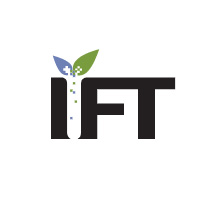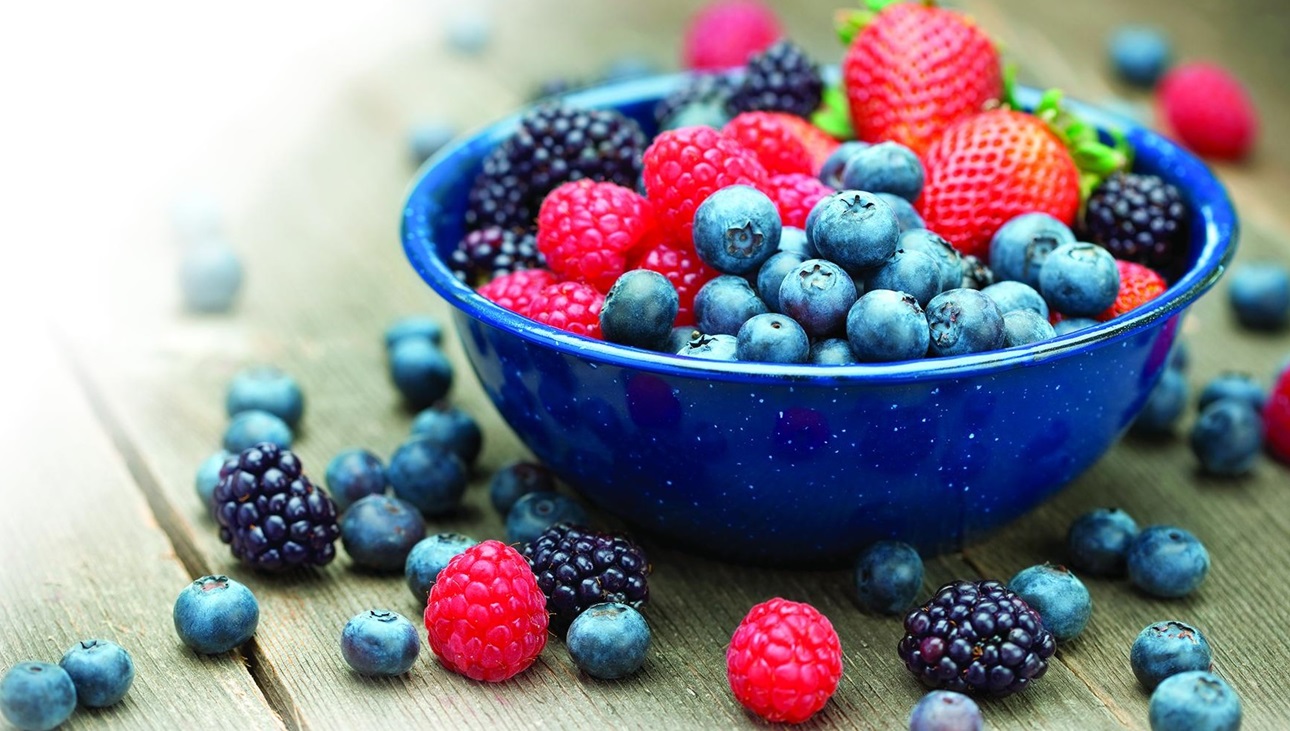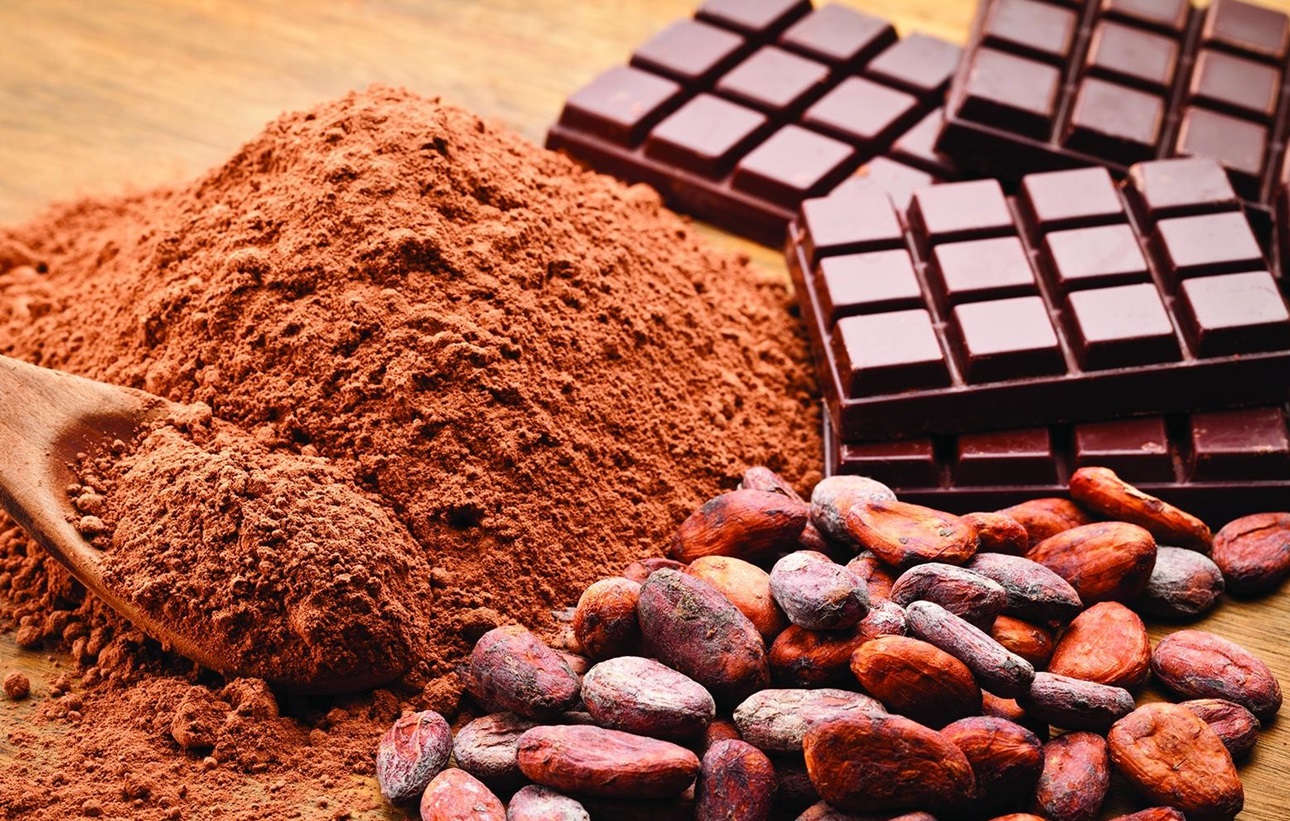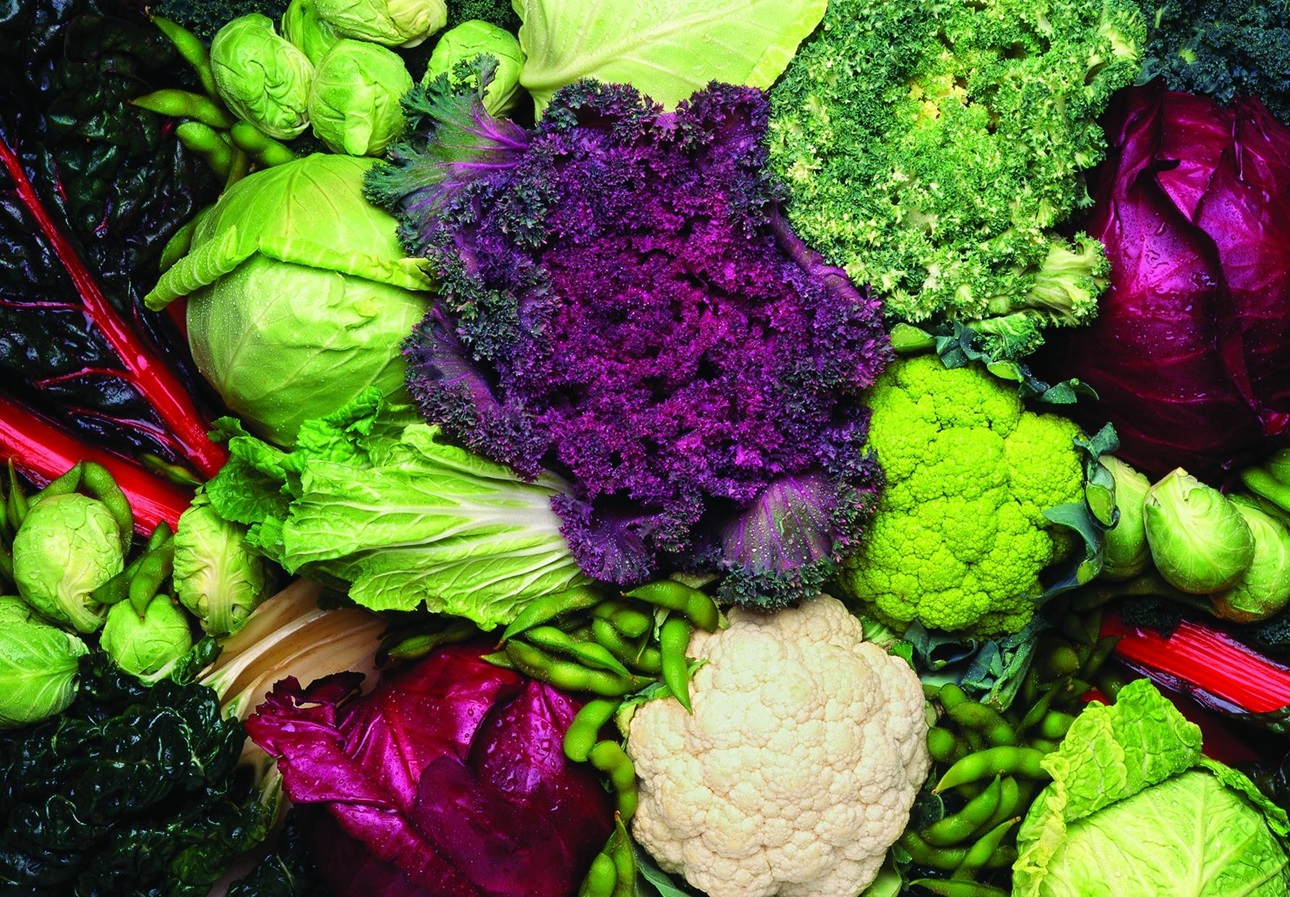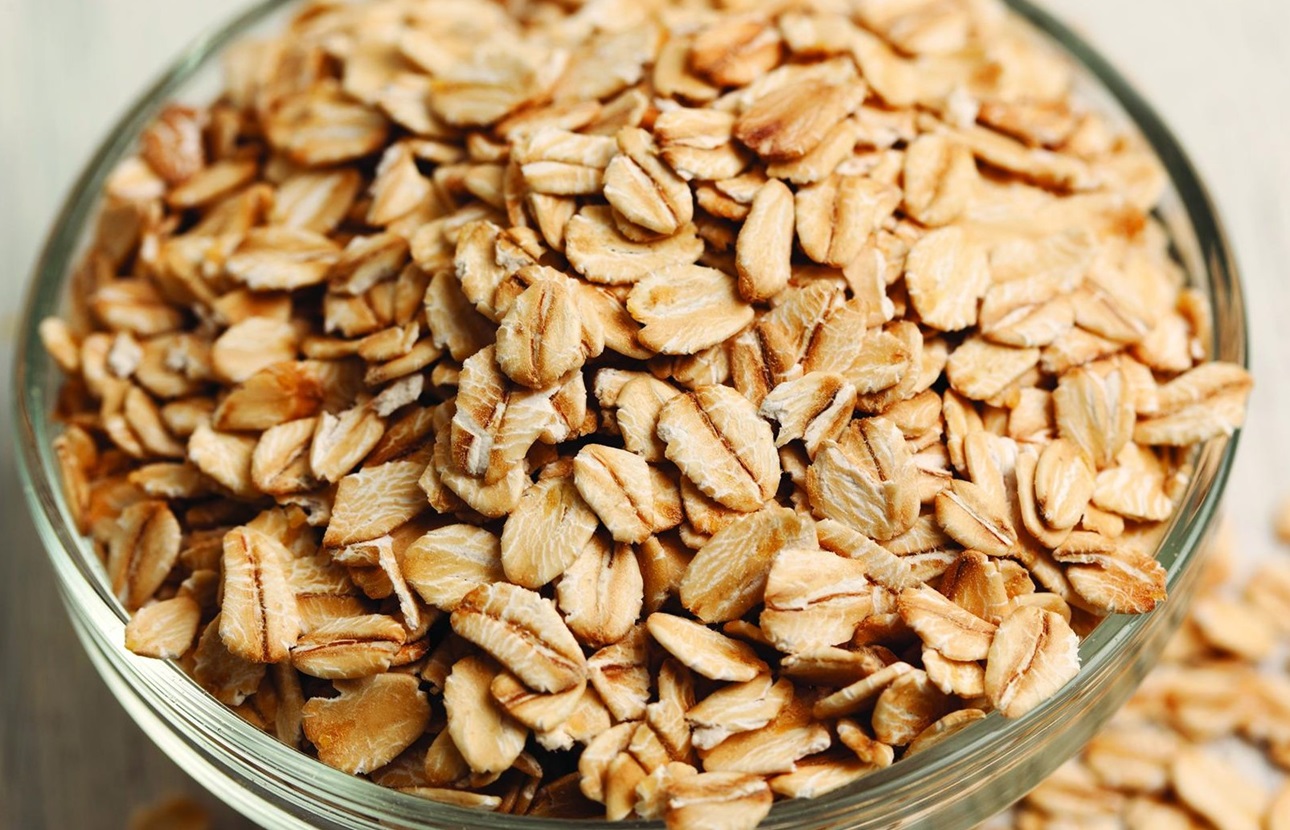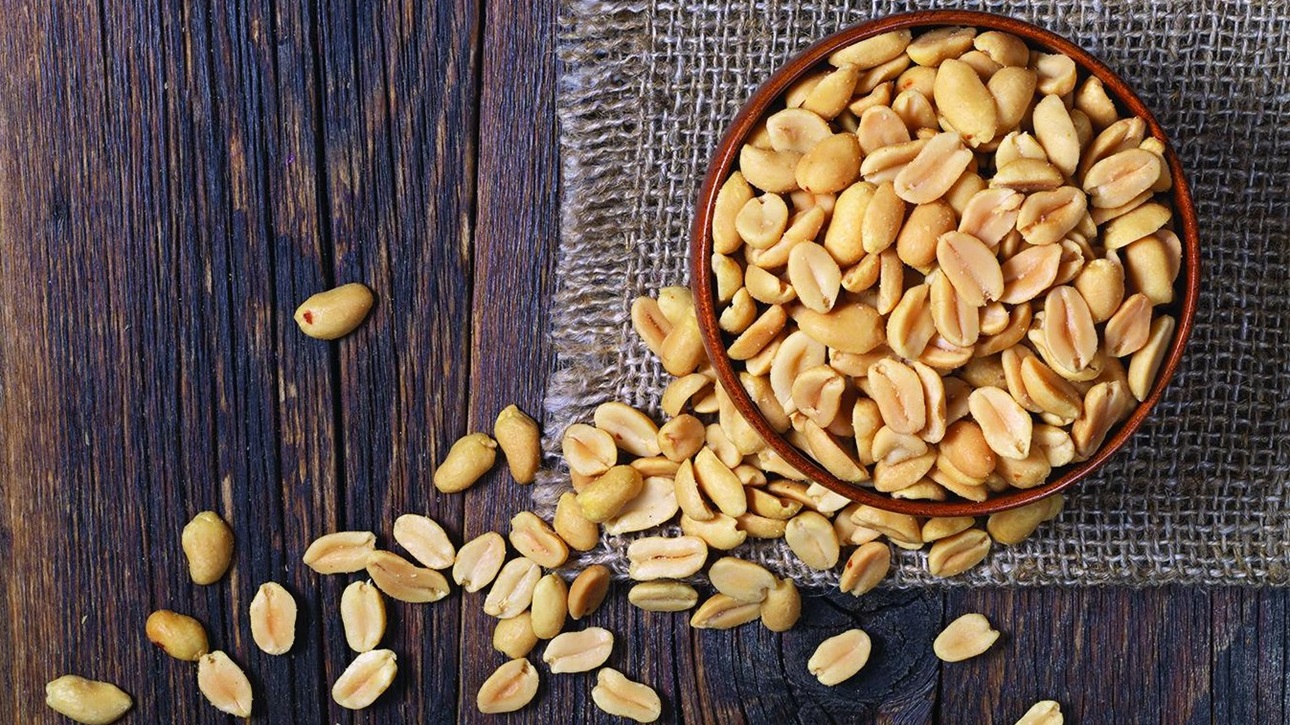
The Dietary Choices That Boost Prevention
The right foods can help prevent risk factors that lead to preventable chronic diseases.
Article Content
In a world where individuals choose entertainment, clothes, transportation, and companions with the swipe of a smartphone, it is surprising that millions of people around the world continue to die from diseases that are largely preventable, but few choose to make the lifestyle adjustments to prevent them. According to the Prospective Urban Rural Epidemiology study, the leading cause of death among middle-age adults in high-income countries is cancer. Cardiovascular diseases remain the leading cause of death worldwide, and also among the top causes of death around the globe is type 2 diabetes. When it comes to cancer, cardiovascular diseases, and type 2 diabetes, epidemiological and clinical research is clear: The cause of these diseases is a complex mix of genetic, environmental, and lifestyle factors that has yet to be completely unraveled, and while genetic causes may be invariable, environmental and lifestyle factors are modifiable. And the most obvious modifiable lifestyle factor in preventing these diseases is diet. Poor diets establish and/or exacerbate the risk factors—pathological angiogenesis, endothelial dysfunction, chronic inflammation, and obesity—that can lead to certain cancers, cardiovascular diseases, and type 2 diabetes, and certain foods impede them.
Pathological Angiogenesis
Cancer begins as a dormant microscopic cluster of cells (i.e., a tumor) with limited potential for adverse outcomes. There are always small tumors developing in the human body, but the immune system usually kills them. When the immune system cannot kill what began as one of the small tumors that routinely form in the body, cancer forms. Cancer is thus a collection of diseases involving a number of mutations occurring in the DNA of cells that the immune system has not been able to manage. Appearing in anyone at any time, an abnormal cluster of cells can grow, mutate, and become harmful only if it acquires a set of blood vessels to supply the nutrients it needs to sustain itself. In fact, all forms of cancer rely on the production of new blood vessels—a process known as angiogenesis. Angiogenesis is a normal biological process in humans; it is the formation and differentiation of blood vessels in the body. Blood vessels transport oxygen, glucose, and other essential nutrients to cells that constitute all the organs in the body. Without properly functioning blood vessels to supply oxygen and other essentials to cells, organs and tissues malfunction and eventually fail. Angiogenesis is therefore essential for normal physical development in the human body; however, there are two types of angiogenesis: physiological angiogenesis and pathological angiogenesis.
During physiological angiogenesis, the amount of blood vessels in the body remains static from birth through adulthood except during circumstances such as menstruation, pregnancy, and tissue repair. This is because the body has an intricate system of enzymes, hormones, proteins, and genes that regulate blood-vessel growth. Physiological angiogenesis facilitates reproduction and wound repair, but pathological angiogenesis is very damaging and is associated with more than 70 degenerative diseases, including obesity, cardiovascular disease, diabetes, and cancer. Pathological angiogenesis can be either insufficient, in which the body does not generate enough blood vessels for tissues to heal, or excessive, in which new blood vessels grow to feed diseased tissue. The latter is a root cause of cancer proliferation. “As humans, we need antiangiogenic factors to prevent diseases associated with proliferation of blood vessels,” said Jack Losso, a professor in the School of Nutrition and Food Sciences at Louisiana State University. “Cancer … is a pro-angiogenic disease; by eating food that can stop the angiogenic factors, then you can slow the progression of cancer.” As more and more evidence emerges about the roles that food and food components (vitamins, minerals, and phytochemicals) can play in preventing or mitigating certain cancers as well as other chronic diseases, researchers now believe that up to 50% of all cancers may be preventable through lifestyle changes and a nutritious diet.
Endothelial Dysfunction
Cardiovascular disease is a group of disorders involving the heart and blood vessels, including hypertension, coronary artery disease, stroke, and heart failure. Most forms of cardiovascular disease begin with endothelial dysfunction and atherosclerosis. The endothelium is the membrane lining the inside of the heart and all blood vessels. It has several functions, including controlling exchanges between the blood and tissues, blood clotting, the formation of new blood vessels (angiogenesis), and vascular tone. The vascular tone of blood vessels determines blood pressure; the cells that make up the endothelium control the dilation and contraction of blood vessels as blood and nutrients are pumped through the vessels. A healthy endothelium prevents molecules from accumulating inside blood vessels while a dysfunctional endothelium is the precursor to atherosclerosis. Atherosclerosis is a buildup of a substance called plaque (i.e., a combination of cholesterol, calcium, and other substances) in the endothelium of one or more arteries, narrowing and hardening the arteries, which inhibits the flow of blood from the heart to other organs. If the plaque ruptures or breaks open, one or more blood clots can form, which could block blood flow in a blood vessel, causing an adverse cardiovascular event such as a stroke or a heart attack. Besides endothelial dysfunction, other risk factors for heart disease are diabetes, obesity, physical inactivity, and poor dietary choices.
Obesity and Chronic Inflammation
The most common type of diabetes is type 2 diabetes, which is a disease that occurs when the body is unable to manage its blood glucose level, allowing it to become too high. Glucose is the body’s primary source of energy and comes from the foods that humans eat. Normally, after meal consumption, the level of glucose in the bloodstream rises; in nondiabetics, this triggers beta cells in the pancreas to release insulin. Insulin then prompts adipose and muscle cells to absorb glucose, which lowers the blood glucose level. In type 2 diabetics, this process is impaired, so adipose and muscle cells ignore the insulin—a condition called insulin resistance. Insulin resistance causes beta cells to overproduce insulin for some time; type 2 diabetics may also eventually lose most of their ability to produce insulin. The two main risk factors for type 2 diabetes are obesity and chronic inflammation.
In fact, obesity and chronic inflammation are common risk factors for cancer and cardiovascular disease as well as type 2 diabetes. While assessing obesity is highly empirical, detecting chronic inflammation is not: Chronic inflammation is a persistent low level of inflammation that can damage cells, DNA, and normal organ functions; it can go undetected for years and is thought to be caused by either unresolved instances of acute inflammation (an essential immune response to disease or injury) and/ or oxidative stress. Oxidative stress occurs when an excessive amount of reactive oxygen species, or free radicals, are produced in the body. A by-product of the body’s natural metabolic process, reactive oxygen species are small, unstable molecules that can cause deleterious changes to complex cellular molecules such as proteins and DNA, the building blocks of cells. Oxygen radicals are missing an electron, so they attack healthy cells to pilfer electrons, initiating a chain reaction that impairs cells. Environmental factors such as cigarette smoke, alcohol, ultraviolet rays from the sun, and a poor diet also cause the formation of reactive oxygen species in the human body. Not all oxygen radicals are bad; some oxygen radicals are essential to help cells generate energy and fight infections. However, it is thought that when reactive oxygen species are overabundant, they cause oxidative stress and, eventually, chronic inflammation.
Pathological angiogenesis, endothelial dysfunction, obesity, and chronic inflammation are all directly or indirectly involved in causing many chronic diseases. Moreover, they often exhibit comorbidity in establishing cancer, cardiovascular disease, and type 2 diabetes:
• Chronic inflammation is a risk factor for endothelial dysfunction, cardiovascular disease, and type 2 diabetes.
• Obese people tend to have chronic inflammation and are at greater risk of developing type 2 diabetes.
• Type 2 diabetics are at greater risk for cardiovascular disease.
• Pathological angiogenesis is present in cancer, obesity (like tumor cells, fat cells are highly dependent on the generation of new blood vessels to thrive), and type 2 diabetes.
• Obesity is a risk factor for cancer, cardiovascular disease, type 2 diabetes, and 13 different types of cancer.
• Up to 40% of all cancers diagnosed in the United States are associated with overweight and obesity.
A Plate of Prevention
In the battle against cancer, cardiovascular disease, and type 2 diabetes, an ounce of prevention is worth a pound of cure as treatments for these diseases are expensive and cures for them are nonexistent. A large body of research indicates that physical activity and a diet consisting of nutritious whole foods can reduce the risk of chronic disease. In fact, researchers believe that 80% of cardiovascular diseases, 90% of cases of type 2 diabetes, and up to 50% of all cancers may be preventable through lifestyle changes and a nutritious diet. “You know, they all say let your food be your medicine,” said Elvira Gonzalez de Mejia, a professor in the Department of Food Science and Human Nutrition at the University of Illinois at Urbana-Champaign. “And … that’s true.” Some of the most nutritious foods on the planet are plant foods, and research studies have long indicated an inverse association between a high consumption of plant foods and chronic diseases. Whole plant foods contain thousands of bioactive natural compounds—vitamins, minerals, and phytochemicals— that, when consumed, catalyze a variety of changes within the body, interacting with cells, enzymes, hormones, and DNA and playing a crucial role in controlling gene expression and cell changes that lead to chronic disease. A diet rich in a variety of vegetables and fruits, nuts and seeds, and whole grains is protective against chronic disease, but experts say that berries, cruciferous vegetables, oats, peanuts, and tea stand out as being particularly effective in halting many of the sequences that lead to chronic diseases.
• Berries. Berries contain secondary metabolites that are protective against cardiovascular disease, cancer, obesity, type 2 diabetes, and a host of other chronic health disorders. These secondary metabolites are phytochemicals that can be even more effective in the human body than pharmaceuticals. For example, strawberries, red raspberries, and blueberries contain polyphenolic compounds that help dilate blood vessels, thereby reducing blood pressure. These berries do this by inducing an enzyme (nitric oxide synthase) in the endothelial cells that causes them to generate nitric oxide.
Nitric oxide is integral for human health because it maintains the health of blood vessels, lowers blood pressure, and protects against heart attack and stroke; it also regulates gut motility, acts as a neurotransmitter in the brain, and plays a role in the apoptosis of cancer cells. But as humans age, the production of nitric oxide in the body diminishes. “We have a unique enzyme called endothelial nitric oxide synthase inside the endothelial cells. If we can induce that molecule, we can generate nitric oxide,” said Indika Edirisinghe, an associate professor of food science and nutrition at the Institute for Food Safety and Health and associate director of its Center for Nutrition Research. Consuming berries containing polyphenols is one way to induce the production of nitric oxide.
In addition, blueberries, raspberries, strawberries, and blackberries contain anthocyanins, which are said to be highly potent in fighting chronic disease. “We have found that when you have those compounds in your blood, we see some significant effects with respect to oxidative stress and inflammation,” Edirisinghe said. In particular, anthocyanins are said to have deleterious effects on cancer, obesity, heart disease, and diabetes because of their ability to suppress inflammation and angiogenesis. “The advantage of antiangiogenic food is that, in general, angiogenesis is a process that turns on and off. If you consume the food, it stops the process; if you don’t consume the food, you don’t have an antiangiogenic process going on,” Losso explained. “Antiangiogenic foods are anti-inflammatory, and inflammation is the basis of many, many diseases.”
• Cocoa. Research at Brigham Young University (BYU) indicates that cocoa may be helpful in addressing some key issues with both types of diabetes: protecting beta cells, producing more beta cells, making beta cells function better, and improving insulin sensitivity. Jeffery Tessem, an assistant professor in the Department of Nutrition, Dietetics, and Food Science at BYU, and Andrew Neilson, an associate professor of food science at Virginia Polytechnic Institute and State University, have been investigating the phytochemical epicatechin, a compound in cocoa. Epicatechin is present in apples, blackberries, grapes, and other fruits, but cocoa has the highest concentration of epicatechin and in different forms. “It comes in a monomeric form; it comes in a polymeric and an oligomeric form,” Tessem said. “The monomeric form of epicatechin is able to cause beta cells to secrete insulin at a higher rate. [This means] if you take a beta cell and you expose it to glucose, it will release insulin. But if you give that same [beta] cell an epicatechin in the same concentration of glucose, it will significantly enhance the amount of insulin it releases.” These results were published more than two years ago, but recently, Tessem and his research colleagues determined the phytochemicals in cocoa are exerting their effect through a secondary method: “They’re actually being metabolized in the gut by the gut bacteria, and it’s the small compounds that then cross the gut and make their way into circulation,” Tessem said. “We’ve shown that there are three derivatives of epicatechin that are actually absorbed much better than epicatechin is.” The epicatechin derivatives from cocoa also enhance insulin secretion from beta cells. Hence, cocoa may be the most potent food in fighting type 2 diabetes.
• Cruciferous Vegetables. Named after their four-petal flowers that form a cross, cruciferous (or Brassica) vegetables encompass arugula, bok choy, broccoli, Brussels sprouts, cabbage, cauliflower, collard and mustard greens, kale, radishes, rapini, and other vegetables. They are often referred to as the most powerful disease-fighting foods in the vegetables and fruits category. Cruciferous vegetables are rich in fiber and sulfur-containing phytochemicals called glucosinolates. The glucosinolates themselves are not deemed to confer beneficial bioactivity, but when cruciferous vegetables are chopped or chewed, plant enzymes interact with glucosinolates, transforming them into isothiocyanates and indoles. Isothiocyanates are said to deactivate carcinogens, retard tumor growth, and promote anti-inflammatory responses. Similar health benefits are attributed to the bioactivity of indoles. Cruciferous vegetables contain other beneficial compounds such as vitamin C, vitamin K, and other nutrients. Besides their high content of phytochemicals and nutrients with anticancer properties, cruciferous vegetables are also antiangiogenic. “Antiangiogenic foods contain bioactive compounds that interact with one of the stimulators of angiogenesis, and by doing so they stop the process of new blood vessel formation,” Losso said. Hence, high intakes of cruciferous vegetables are associated with reduced risk of breast, colon, gastric, lung, pancreatic, and other cancers as well as diminished inflammation.
• Oats. Oats contain a potent mix of soluble fiber and phytochemicals that has been shown to be effective at reducing cholesterol, blood sugar, and body weight and protecting against cardiovascular disease and colon cancer. In fact, two compounds in oats appear to be largely responsible for most of the effects that are protective against cancer, cardiovascular disease, and type 2 diabetes. Oats contain betaglucan, which is one of only seven kinds of fibers that the U.S. Food and Drug Administration has approved as dietary fibers with scientifically proven health benefits. The beta-glucans in oats decrease the absorption of cholesterol in the intestinal tract, thereby reducing blood cholesterol levels and blood glucose levels.
The other disease-fighting compound in oats is a class of polyphenols: avenanthramides. “Avenanthramides are the unique compounds reported in oat and are located in the bran fraction of oat grain,” said Shengmin Sang, a professor in the Department of Family and Consumer Sciences at North Carolina Agricultural & Technical State University. These compounds are phenolic alkaloids that have antioxidative and anti-inflammatory properties. “Both oxidative stress and inflammation are the causing factors of cancer,” Sang pointed out. Consequently, research has shown that avenanthramides have the ability to kill colon cancer cells and breast cancer cells in vitro. Avenanthramide aglycones are the dominant avenanthramide compounds in oats, and one particular avenanthramide aglycone (avenanthramide 2c) has shown considerable potency against human colon cancer cells in vitro, which would make avenanthramides a revolutionary approach to chemoprevention and conventional chemotherapies. Moreover, their nature-designed biochemistry allows them to target signaling molecules unique to cancer cells while leaving normal cells undisturbed. Chemotherapies usually kill not only cancer cells in the body but also normal cells in the body. “That’s why you get a lot of the negative side effects: Losing your hair and those sorts of things are because you’re killing these normal cells,” said Jason Kenealy, an assistant professor in the Department of Nutrition, Dietetics, and Food Science at BYU. Oats are also antiangiogenic. “Our studies demonstrate that oat [has benefits] beyond just fiber,” Sang said, “and it has unique bioactive phytochemicals to provide beneficial health effects.”
• Peanuts. Peanuts provide a remarkable combination of nutrients and bioactive compounds that makes them one of nature’s most nutrientdense foods. Peanuts are made up of about 26% protein and 50% lipids; most of the lipids are a combination of oleic and linoleic acids, which are mono- and polyunsaturated fatty acids. Monounsaturated fats constitute at least half of the unsaturated fats in peanuts and are said to help lower low-density lipoprotein levels in the blood and lower the risk of cardiovascular disease. Besides protein and heart-healthy lipids, peanuts also contain fiber. In fact, more than one-third of the carbohydrates in peanuts is fiber, which helps improve digestion, slows absorption of certain nutrients, and also lowers the risk of cardiovascular disease and obesity. Peanuts are also recognized as an excellent source of vitamins (especially folate, niacin, and vitamin E), minerals, and bioactive compounds such as para coumaric acids, proanthocyanidins, and resveratrol.
Perhaps the most interesting bioactive compound peanuts contain is arginine. “Arginine is quite a dominant amino acid found within the peanut protein,” said Ronald Pegg, a professor in the Department of Food Science and Technology at the University of Georgia. “Peanuts tend to have a high ratio of arginine to lysine. That’s quite important because arginine, when it is metabolized, can produce … nitric oxide, which is a potent vasodilator.” Most (if not all) cardiovascular disorders and chronic diseases are related to the loss of nitric-oxide production. Peanuts are therefore protective against endothelial dysfunction, cardiovascular disease, and obesity; they too are antiangiogenic.
• Tea. All varieties of nonherbal tea—including green, black, and oolong—originate from the leaves of Camellia sinensis, and the variation in color and type of tea is the result of different processing techniques. Dried, unoxidized tea leaves produce green tea; wilted, oxidized tea leaves yield black and oolong teas. Regardless of type, tea is an antioxidant- rich beverage, containing more polyphenols than many fruits and vegetables. Besides being rich in compounds that combat cell-damaging oxidative stress, tea has a chemical makeup that includes enzymes, carbohydrates, protein, and lipids. The impressive chemical profile of tea—particularly its high antioxidant content—serves as the basis for the surge in research on the health benefits of tea.
At the University of Illinois, the de Mejia laboratory has identified certain bioactive compounds in teas that stand out from the rest in terms of their potency against disease. “We did in vivo studies, looking at the efficacy of certain phytochemicals and looked at their potential benefits: lowering inflammation, lowering the risk of certain types of cancer (such as colon cancer), and lowering the risk of type 2 diabetes,” de Mejia revealed. Other research has shown that both green tea and black tea have positive effects on health—particularly cardiovascular health. The consumption of black tea is associated with the decreased incidence of heart attack while the consumption of green tea is associated with reduced levels of low-density lipoproteins and triglycerides. Both black tea and green tea are believed to fight inflammation and are associated with reduced risk of chronic diseases in general. Perhaps this is due to the fact that, regardless of its color, tea contains an abundance of polyphenols. In fact, the most abundant compound in green tea is catechin, a polyphenol that encompasses up to 30% of the weight of tea leaves. “Green tea is a food that is both antiangiogenic and antiinflammatory. It contains epigallocatechin gallate, which has [been] shown to be effective against a lot of angiogenic diseases,” Losso said. Catechins are converted to theaflavins during the oxidation process that turns green tea leaves into black tea. Consequently, the most abundant polyphenol in black tea is theaflavin, and research shows that theaflavins may possess as much bioactive potency as catechins.
The Diet Dictum
Food is essential to life, but most people either do not understand how to eat healthfully or simply choose not to. Pathological angiogenesis, endothelial dysfunction, chronic inflammation, and obesity are affected by the presence or absence of certain foods. Poor dietary choices cause or support each of these disease risk factors while nutritious foods lessen or eliminate them. Carbohydrates, proteins, lipids, water, minerals, and vitamins are necessary to carry out daily functions inside the body. However, the excessive intake of some of these nutrients creates problems. “If you can have a healthy diet, which means you follow the dietary guidelines, … then basically you don’t put a burden on your body. And if you do put a big burden on your body, then try to add some other compounds to your diet that can help,” Edirisinghe said. Research makes clear that the foods that lower the risk of cancer, cardiovascular disease, and type 2 diabetes are the ones that contain compounds that fight abnormal angiogenesis, endothelial dysfunction, chronic inflammation, and obesity. And while a healthful diet does not guarantee a disease-free life, it can substantively lower the risk of chronic disease.
Plant-based diets that incorporate a variety of whole plant foods appear to be the most beneficial to human health, but plant-based does not mean vegan or vegetarian. Animal products are the best, and sometimes only, food sources for certain nutrients, and specific animal products confer health benefits as well: “Antiangiogenic foods can be plant-based or animal-based. Some of the early antiangiogenic compounds were discovered in shark cartilage,” Losso stated. “Lacto-ferrin, for instance, is from milk, which is animal-based. Cartilage from chicken can also be antiangiogenic.” Seafood, hard cheeses, and cow’s milk contain compounds that are antiangiogenic and that appear to be beneficial to the cardiovascular system. In essence, the message here is to choose a variety of nutrient-dense foods within all food groups in recommended amounts for optimal health over a lifespan.

